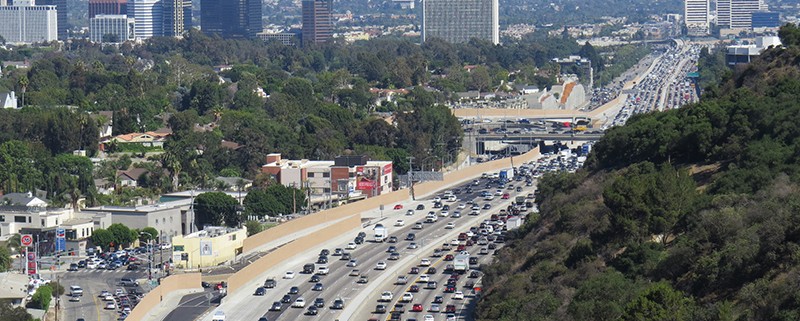Getting The Most From Your Work Commute
Hello. How ‘bout that ride in.
Every weekday morning, millions of Americans take to their cars and head to work. According to a study by the University of Michigan Transportation Research Institute, workers from the 30 largest U.S. cities spend an average of 4.33 hours commuting to and from work each week. Those working in New York City lament the longest work drive in the nation at 6.65 hours per week. That’s a lot of time on the road that can leave motorists and their employers paying a heavy toll.
Mental Health
Ever been stuck in traffic and taken a quick look at the faces of your fellow drivers? Well, stop! Keep your eyes on the road. That’s how accidents happen.
Now, ever been a passenger in a car and observed the drivers’ expressions while in traffic? You might notice a lot of grimaced or yelling faces mixed with dejection, boredom, anger, and anxiety. Sure, there are smiling and laughing faces, but those are few and far between. The majority of drivers are stressed, and they’re taking it with them to work.
The University of Montreal’s School of Industrial Relations found that commute times of more than 20 minutes can lead to “professional burnout” for many employees–disillusionment, cynicism, and general unhappiness with their workplace. And a study from the U.K.’s Office of National Statistics found that commuters, when compared to non-commuters:
- felt less satisfied with their lives,
- rated their daily activities as less worthwhile,
- reported less happiness and higher anxiety than non-commuters.
Mental and physical health will often, if not always, impact one another. So it should come as no surprise that employees who face long, stressful commutes, also suffer from physical ailments.
Physical Health
A 2012 report by the American Journal of Preventive Medicine found that greater commuting distances are associated with decreased cardiorespiratory fitness, increased weight, and other indicators of metabolic risk. Additionally, the cramped quarters of a car present the perfect setting for back and neck pain. This is to say nothing of the spikes in blood pressure that may occur thanks to:
- That guy who cut you off
- That guy who’s driving too slow
- That guy who doesn’t use a signal
- That guy who’s tailgating
Yeah, you know those guys. They’re a real pain.
Strategies to Overcome the Effects of Long Work Commutes
Fortunately, a long daily commute doesn’t have to be a life sentence of pain and stress. By realizing that long commutes can be hazardous to your physical and mental health, employees and employers can be proactive in combating the negative outcomes–and maybe even add some positive ones.
What Employers Can Do
Telecommuting: In addition to cutting down or eliminating commutes, telecommuting has been shown to increase employee productivity, retention, and satisfaction, according to a study in the Harvard Business Review. For those reasons and others, telecommuting is a rising trend among employers in the United States, where nearly 24% of workers state that they work some hours from home (U.S. Bureau of Labor Statistics, 2011).
Flexible Work Arrangements (FWA): Often times, work commutes cause employees stress and anxiety because some days they are challenged to fit everything into the day. Whether it be doctor’s appointments, childcare, volunteer commitments, or car maintenance, these commuters are feeling the time crunch –and that 20-minute traffic delay doesn’t help.
Employers who offer employees flexibility to work where and when they prefer also provide them with the autonomy to manage their daily schedules in the most effective manner. As with telecommuting, research has shown that productivity and absenteeism are positively impacted by a FWA (SHRM, 2014)
Fitness Space/Classes: Employers can seek to provide employees with resources to alleviate stress too. This can be as simple as providing a quiet room for meditation or, at larger office spaces, access to a fitness facility. Professionals–for mental or physical health–can be invited in to teach crash courses in stress-relieving techniques, such as yoga, mindfulness, meditation, tai chi, or high-intensity cardio workouts.
What Employees Can Do
Change Your Perspective: Before getting into the car, realize that more than likely you will encounter traffic, delays, and idiot-drivers. By simply taking the time to set realistic expectations for your drive, you’ll be less likely to become stressed by delays and the antics of your fellow-drivers.
Podcast or Audio Books: Get a jump on your workday by listening to a podcast for professional/personal development. Or, if you can’t find the time to read for pleasure, why not spend your commute listening to a book? These approaches will have you looking forward to your commute, and the delays may not seem so bad.
Mindfulness: There are many resources available for practicing mindfulness. If you are not familiar with the practice, read up on it and consider using your commute as an opportunity to practice it. In essence, you will seek to be present in the moment of driving–not using past experiences to explain the present, or worrying about future, possible outcomes that may result from the present–just relaxed, with your attention on the drive. You’ll arrive to work fresh and stress-free.
Getting The Most From Your Work Commute
Commuting to and from work is a necessity for most employees. And although more and more employers are offering telecommuting as an option, it is not likely that your work commute will completely go away anytime soon. To combat the negative impact of commuting to work, both employers and employees must take a proactive approach to managing employee stress inside and outside the workplace.
Eliminating unnecessary employee stress is one of the best ways for organizations to retain employees; it’s also one of the best ways to hire them. ExactHire offers hiring technology that eliminates stress for HR Departments and provides job applicants with a transparent, seamless, stress-free experience from application to onboarding.
Image credit: Los Angeles Traffic ![]() by Luke Jones(contact)
by Luke Jones(contact)







